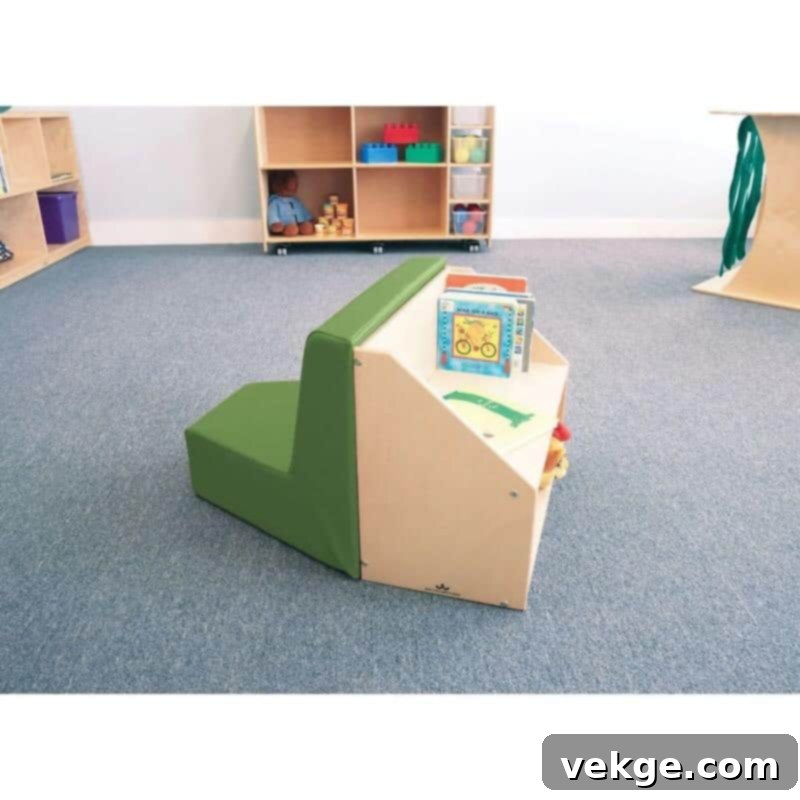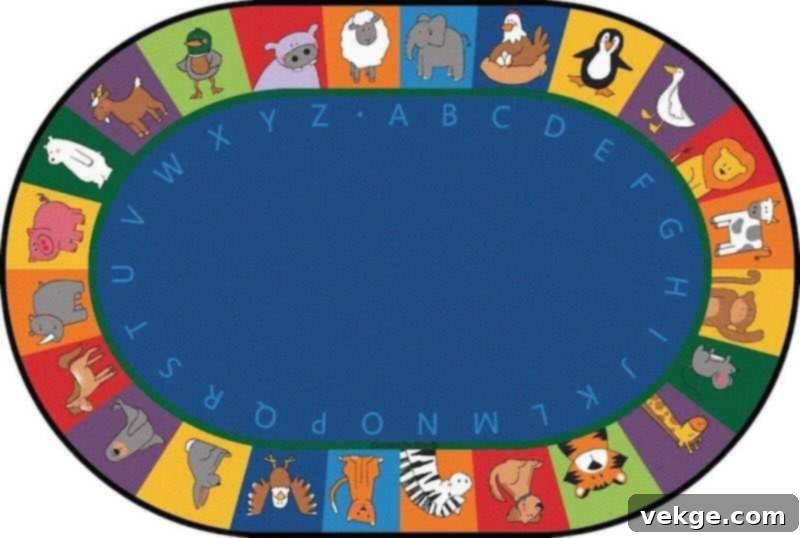Create the Ultimate Home Learning Space: A Parent’s Guide to Boosting Focus & Creativity
In today’s evolving educational landscape, home-based learning is increasingly becoming a fundamental part of a child’s development. As parents, crafting an inspiring and effective educational space for your children is paramount. An optimized learning environment isn’t just a place to do homework; it’s a dynamic hub designed to significantly boost a child’s focus, ignite their creativity, and foster overall academic success. This comprehensive guide will walk you through the essential steps to setting up an ideal and engaging learning space right in your home, ensuring it supports your child’s unique needs and aspirations.
The Foundation of an Effective Home Learning Space
1. Identify and Address Your Child’s Unique Learning Needs
Every child possesses a distinct learning style and set of interests. Their personal learning space should be a reflection of these individual needs, tailored to maximize engagement and comprehension. Start by observing the types of activities your child gravitates towards most. Do they love diving into books for hours? Are they constantly sketching, painting, or building with their hands? Or do they thrive with interactive, hands-on projects? Understanding these preferences is key. By involving your child in the planning process, you not only ensure the space truly meets their functional requirements but also empower them, making them feel valued and heard. This collaborative approach enhances their sense of ownership and excitement for their new environment.
2. Prioritize Comfort and Ergonomics for Sustained Learning
Comfort is not a luxury but a fundamental component in maintaining a child’s concentration and preventing physical strain during long study sessions. Investing in ergonomic furniture is crucial for supporting good posture and promoting long-term health. Adjustable chairs and desks are particularly beneficial as they can grow with your child, offering lasting value and adaptability. Consider the duration your child typically spends at their desk and ensure the seating is adequately comfortable for extended periods. An ergonomic chair with proper lumbar support can prevent back pain, encourage healthy sitting habits, and improve overall comfort. Supplementary items like footrests or supportive cushions can further enhance comfort and proper alignment, making the learning experience more enjoyable and sustainable.
3. Strategically Create Zones for Diverse Activities
Organizing the learning area into distinct, purposeful zones can significantly help children transition smoothly between various activities, reducing distraction and enhancing focus. Here are some effective ideas for carving out different functional zones within your home learning environment:
- Reading Zone: Design a warm and inviting corner with a comfortable beanbag, a plush armchair, or soft floor cushions. A small, accessible bookshelf stocked with age-appropriate and diverse books will encourage a lifelong love for reading. Personalize this sanctuary with your child’s favorite blankets, pillows, or stuffed animals to make it a cherished spot they eagerly anticipate visiting. Good lighting, such as a soft reading lamp, is essential here.
- Creative Zone: Dedicate a specific table for arts and crafts, complete with well-organized storage for supplies like crayons, paper, paints, and clay. This setup allows children to fully immerse themselves in creative expression without worrying about making a mess elsewhere in the house. Opt for easy-to-clean surfaces and washable materials for practical maintenance. Displaying their finished artwork on walls or a dedicated bulletin board proudly celebrates their creativity and provides a powerful boost to their self-esteem and artistic confidence.
- Study & Homework Zone: Establish a quiet, distraction-free area featuring a sturdy desk and an ergonomic chair. Excellent lighting, both ambient and task-specific, is vital. This zone should be free from unnecessary noise and interruptions, minimizing digital distractions to promote deep focus. Utilize desk organizers and trays to keep school supplies, textbooks, and notebooks neatly within reach. A visual timer or a clock can also be invaluable tools, helping your child develop effective time management skills and stay on track with their assignments.
4. Incorporate Stimulating Educational Tools and Decor
Beyond basic furniture, integrate educational tools and thoughtful decor to make the space truly stimulating and inspiring. Large wall charts, detailed maps, and educational posters covering subjects like the alphabet, numbers, or scientific concepts can visually reinforce learning and spark curiosity. Interactive elements such as whiteboards or corkboards are incredibly versatile; they can be used to display daily schedules, weekly goals, important announcements, or celebrate recent achievements. Consider a dedicated bulletin board where your child can pin up their best schoolwork, homework schedules, inspirational quotes, or even pictures of their role models. This not only aids in organization but also serves as a constant visual reminder of their progress and aspirations, keeping them motivated and engaged.
5. Ensure Ample and Smart Storage Solutions
Maintaining an organized learning area is non-negotiable for sustaining a productive and calm environment. Clutter can be a significant source of distraction and stress. Implement a variety of storage solutions: open shelves for books, clear bins for small items, and cabinets for less frequently used supplies or craft materials. Personalized step stools with integrated storage can add a whimsical, playful touch while offering additional functionality, such as a mobile seat or a spot for toys. Labeling storage containers clearly, perhaps with both text and pictures, makes it incredibly easy for your child to find exactly what they need and, crucially, encourages them to put items back in their designated place. Regularly decluttering and rotating supplies and toys can keep the space fresh, exciting, and prevent it from becoming overwhelming.
Enhancing the Space with the Right Products
While the foundational elements are critical, the careful selection of specific products can profoundly enhance the usability, appeal, and educational impact of your child’s learning environment. Here are a few thoughtfully chosen items that can make a significant difference:
Personalized Step Stools: These charming items are more than just practical for reaching higher shelves or helping in the kitchen. They introduce a personalized element to the room, making it uniquely your child’s. Customize them with your child’s name, a favorite design, or vibrant colors. Beyond their primary function, they can serve as impromptu additional seating for friends or even discreet storage for small treasures. Step stools can instill a sense of ownership and pride, encouraging your child to take responsibility for their space and engage in various activities more independently.
Comfortable Reading Nooks: Creating a dedicated reading nook with supremely comfortable seating and optimal lighting is one of the most effective ways to cultivate a lifelong love of reading. Reading nooks are inherently inviting and can be creatively adapted to fit almost any available space, from a quiet corner to beneath a window. Incorporate soft, warm lighting such as string lights, a stylish floor lamp, or a specialized reading lamp to craft a cozy, magical atmosphere. Adding a small, child-sized table for a drink or a snack can transform it into the perfect sanctuary for your child to unwind, escape into stories, and develop strong literacy skills.

Functional Arts Tables: A purpose-built arts table provides an invaluable, dedicated area for all creative activities, from drawing and painting to crafting and modeling. This helps to contain creative messes to one spot, keeping the rest of your home tidy. Look for tables featuring built-in storage compartments, drawers, or shelves to keep all art supplies neatly organized and easily accessible. Selecting a table that is the appropriate height for your child’s age and stature, paired with a comfortable, supportive chair, will encourage longer, more immersive creative sessions. Proudly display their completed projects on a nearby wall, shelf, or string line to celebrate their artistic endeavors and hard work.
Engaging Classroom Rugs: The addition of a vibrant classroom rug can brilliantly define different functional areas within the learning space, providing a soft, comfortable surface for various floor-based activities. Rugs with educational themes—such as the alphabet, numbers, world maps, or geometric shapes—can transform learning into an interactive and enjoyable experience. When choosing a rug, prioritize durability, stain resistance, and ease of cleaning, ensuring it can withstand daily use and spills. Use the rug to visually demarcate zones for reading, imaginative play, group activities, or even quiet contemplation, making the entire space feel more organized, cohesive, and inviting.

Adding Personal Touches to Make the Space Uniquely Special
To truly make the learning space resonate with your child, incorporate elements that vividly reflect their unique personality, passions, and interests. Empower them by letting them choose colors, themes, or specific decorations that genuinely excite them. This could range from posters of their favorite animals, characters, or faraway places, to displaying their own cherished artwork and creative projects. Allowing personal expression helps your child feel deeply connected to their learning environment, significantly boosting their motivation, engagement, and overall enthusiasm for spending time there. It transforms a functional room into a personal sanctuary where their identity is celebrated.
Encouraging Ownership and Responsibility
Involve your child actively in the maintenance and organization of their learning space. Assign them simple, age-appropriate tasks like tidying their desk, putting away supplies after use, or wiping down surfaces. This seemingly small act is powerful; it fosters a strong sense of responsibility, teaches invaluable organizational skills, and reinforces the importance of a clean environment. Make it an enjoyable activity by turning it into a game, perhaps setting a timer to see how quickly they can tidy up. Consistently praise their efforts and celebrate their successes, no matter how small, to reinforce positive behavior and encourage consistent participation in maintaining their inspiring new learning space.
Putting It All Together: Your Blueprint for a Thriving Home Learning Environment
Creating an optimal home learning environment for your child is a rewarding endeavor that requires thoughtful planning and a harmonious combination of functional furniture and engaging decor. Begin by thoroughly assessing your child’s specific learning needs and carefully evaluating the available space within your home. Prioritize comfort and ergonomic design to ensure physical well-being and sustained focus. Strategically divide the area into distinct zones for different activities, making transitions smooth and natural. Leverage stimulating educational tools and decorative elements to continuously inspire curiosity and reinforce learning concepts.
Integrate carefully selected products such as personalized step stools for accessibility and a sense of ownership, cozy reading nooks to cultivate a love for literacy, robust arts tables for unbridled creativity, and vibrant classroom rugs to define zones and add an interactive element. By thoughtfully integrating these various elements, you can craft a dynamic space that not only supports but actively enhances your child’s educational journey, making learning an exciting, joyful, and deeply enriching experience. When selecting key elements for your child’s learning space, consider the extensive benefits of incorporating classroom rugs. These versatile rugs not only provide a soft, comfortable surface for sitting, playing, and group activities but also critically help in clearly defining specific learning zones within a room, making it much easier for children to focus on their intended activities without visual clutter or distraction.
By focusing on interactive classroom rugs, you can transform any room or designated area into an educational haven, significantly enhancing both the aesthetic appeal and the functional aspects of your home learning environment. This thoughtful approach ensures that every inch of the space contributes positively to your child’s growth and development.
Ultimately, creating a dedicated, well-designed learning space at home is a profound investment in your child’s future. With a touch of creativity, meticulous planning, and an understanding of their unique needs, you can build an environment that nurtures their innate love of learning, fosters their independence, and actively supports their academic success and personal growth. Start this transformative project today, and witness your child thrive, excel, and discover new passions within their inspiring, personalized learning sanctuary.
